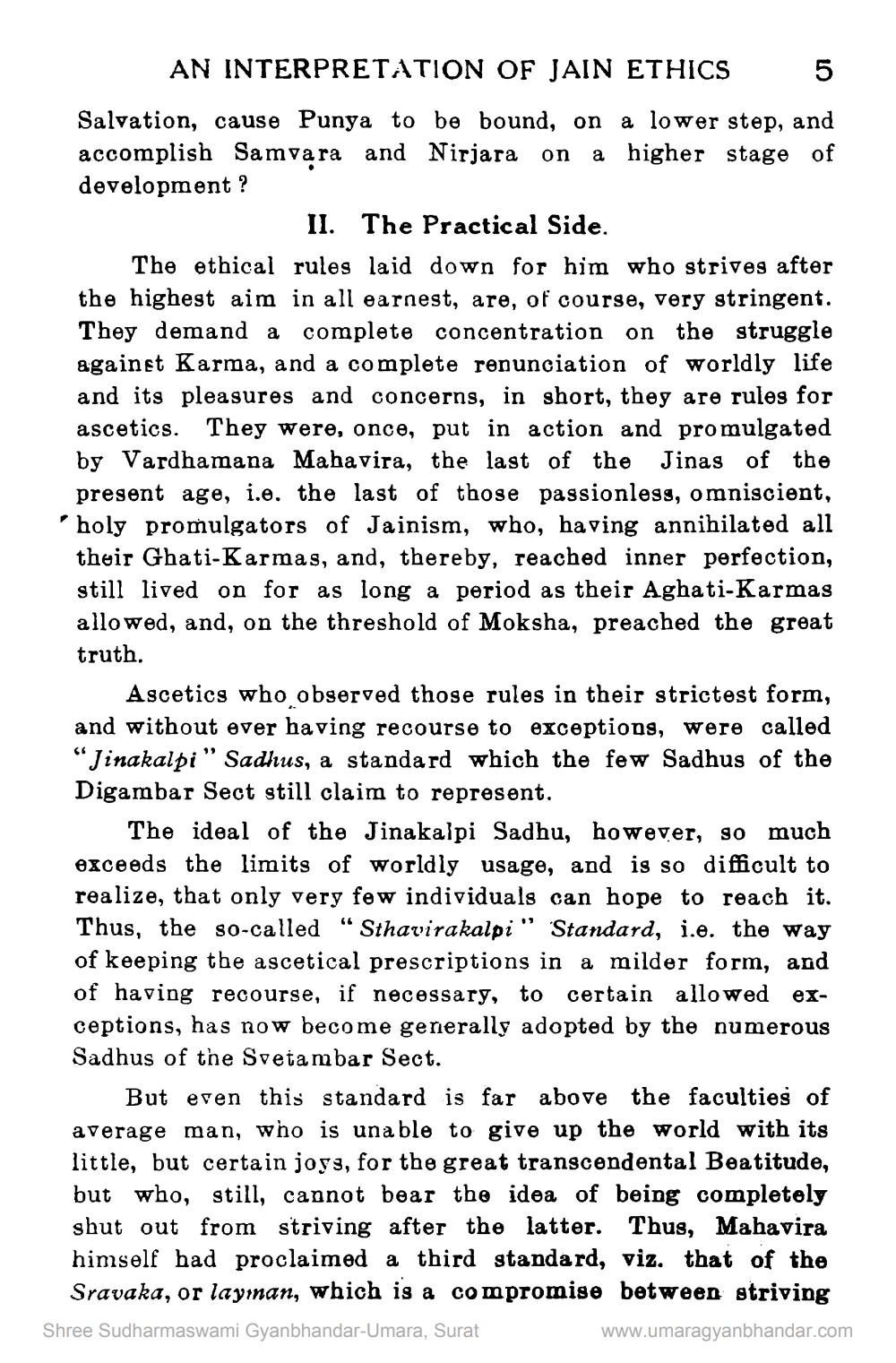________________
AN INTERPRETATION OF JAIN ETHICS
5
Salvation, cause Punya to be bound, on a lower step, and accomplish Samvara and Nirjara on a higher stage of development ?
II. The Practical Side. The ethical rules laid down for him who strives after the highest aim in all earnest, are, of course, very stringent. They demand a complete concentration on the struggle against Karma, and a complete renunciation of worldly life and its pleasures and concerns, in short, they are rules for ascetics. They were, once, put in action and promulgated by Vardhamana Mahavira, the last of the Jinas of the present age, i.e. the last of those passionless, omniscient, holy promulgators of Jainism, who, having annihilated all their Ghati-Karmas, and, thereby, reached inner perfection, still lived on for as long a period as their Aghati-Karmas allowed, and, on the threshold of Moksha, preached the great truth.
Ascetics who observed those rules in their strictest form, and without ever having recourse to exceptions, were called "Jinakalpi" Sadhus, a standard which the few Sadhus of the Digambar Sect still claim to represent.
The ideal of the Jinakalpi Sadhu, however, so much exceeds the limits of worldly usage, and is so difficult to realize, that only very few individuals can hope to reach it. Thus, the so-called “Sthavirakalpi" Standard, i.e. the way of keeping the ascetical prescriptions in a milder form, and of having recourse, if necessary, to certain allowed exceptions, has now become generally adopted by the numerous Sadhus of the Sveta mbar Sect.
But even this standard is far above the faculties of average man, who is unable to give up the world with its little, but certain joys, for the great transcendental Beatitude, but who, still, cannot bear the idea of being completely shut out from striving after the latter. Thus, Mahavira himself had proclaimed a third standard, viz. that of the
Sravaka, or layman, which is a compromise between striving Shree Sudharmaswami Gyanbhandar-Umara, Surat
www.umaragyanbhandar.com




